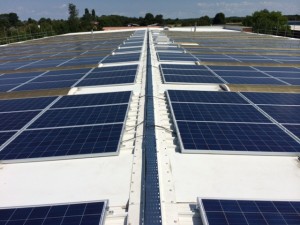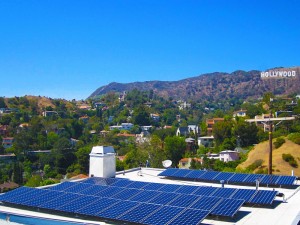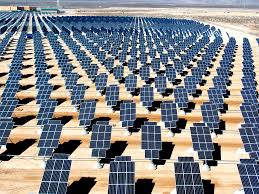What is EMR?
EMR stands for Energy Market Reform. It is a policy created by the government to incentivise investment in low carbon technologies such as renewable energy.
It is a levy applied to consumers which has been designed to encourage users to reduce their consumption or make a contribution to meet future demands.
EMR will be implemented by way of additional charges onto your electricity bills to meet the £100BN of capital investment the UK require to meet future projected energy demand.
Albeit a gradual ascent, the next year or two is expected to see this ‘tax on consumption’ rise sharply. The more you consume, the more you will be charged.
Consumers could see as much as a 42% increase in energy costs as a result of EMR and other related charges.
Provide or Reduce?
The thinking behind this reform is to charge electricity customers to either:
- PROVIDE funds to the 100BN investment pot needed to meet the infrastructure demands
- Encourage them to REDUCE their carbon consumption and use secure future-proof technologies
As consumers, we have two options –
Provide: In addition to our energy costs, pay a consumption based levy to fill the coffers pot.
Reduce: Make changes to our consumption. Install technologies to future-proof our businesses and homes. Renewable energy solutions to meet our requirements will help us to avoid high EMR charges, reduce our energy bills and grid consumption.
What’s in it for me?
By installing a renewable technology to generate your own electricity you will become a ‘Generator’ and you may also be able to obtain CfD (Contract for Development) payment alongside a reduced ERM contribution.
CfDs are payments made to the Generator by a Low Carbon Contracts Company (LCCC) for renewable electricity sent back to the network for use at times of peak demand or shortage.
The cost of the CfD payments to generators will incidentally be met through the EMR related charges on consumer’s bills.
If you remain dependent on the grid, and as a result of EMR you will effectively be funding consumers who are renewable, paying less EMR and being paid CfD’s!
Call us today on 01245 227100 or contact us and we will help you to design a system to suit your needs and combat avoidable charges.
Posted: February 17th, 2017 by
| Filed under Commercial Solar, Energy Efficiency, Renewable Energy, Solar PV
With the rapid growth of Solar PV installations in the UK, grid capacity in some areas is coming under scrutiny. Some of the out-dated and older electricity networks are beginning to struggle with the power flow back to the grid from the UK’s many Solar PV plants. District Network Operators (DNOs) are now imposing export limitations on new Solar PV installations, which prevent potential generators from connecting the size of system they want up to the electricity network. Read the rest of this entry »
Posted: July 14th, 2015 by Browns
| Filed under Energy Efficiency, Feed in Tariff (FiT), power, Renewable Energy, Renewable Energy Incentives, Solar PV, Uncategorized
At a major conference of banks and investors this week, Sue Milton of international giant RBS, expressed a

One of Several Funded systems installed by Carmichael Browns
preference towards Solar PV as an investment technology. Its no secret that Solar PV has been steadily growing in the UK over the past decade. With many businesses have moved to utilise roof space by investing in Solar PV to not only reduce energy bills but also receive payments from the government Feed In Tariff. Read the rest of this entry »
Posted: May 1st, 2015 by Browns
| Filed under Commercial Solar, Energy Efficiency, Feed in Tariff (FiT), Solar PV, Uncategorized
With the UK general election around the corner, parties have revealed manifestos relating to renewable energy.
Renewable energy is a hot topic in the UK with thousands of homes and businesses investing in renewable technologies such as Solar PV. Read the rest of this entry »
Posted: April 16th, 2015 by Browns
| Filed under DECC, Energy Efficiency, power, Renewable Energy, Solar PV, Uncategorized
The US state of California’s governor Jerry Brown has gone a step further on his previous support

of solar
One of Mr Browns main strategies to reach this goal is a dramatic increase in rooftop solar in the notoriously sunny locale.power with a new target to have 50% of “the golden state’s” energy to come from renewable sources by 2030. Read the rest of this entry »
Posted: February 17th, 2015 by Browns
| Filed under Energy Efficiency, power, Renewable Energy, Solar PV
When will solar power in the UK overtake its current subsides?

Solar PV in the UK is fast outgrowing subsidies
It’s widely acknowledged that Solar PV in the UK has taken off, in fact in the past year solar PV installs across
the country have doubled.
The subsidies were put in place to improve investments into Solar PV and in turn further research in order for power generated from Solar PV to reach grid parity.
It’s a fact that the goal is for Solar PV in the UK to become subsidy free, the main question is when? Read the rest of this entry »
Posted: February 12th, 2015 by Browns
| Filed under Commercial Solar, DECC, Energy Efficiency, Feed in Tariff (FiT), Green Deal, power, Renewable Energy, Renewable Energy Incentives, Solar PV, Uncategorized
This week the Department for Energy and Climate Change (DECC) have released figures on the state of Solar Power in the UK. these figures show that the amount of energy generated by solar power in the UK has doubled over the last 12 months with close to 5 GW installed by the end of 2014,up from a 2.8GW in 2013, that’s enough solar panels to provide electricity to 1.5 million homes. Read the rest of this entry »
Posted: February 6th, 2015 by Browns
| Filed under Commercial Solar, DECC, Energy Efficiency, Feed in Tariff (FiT), power, Uncategorized

Large scale Solar power could be the best option moving forward
Could the world be run on solar power?
It’s widely acknowledged that the vast majority of currently used fossil fuels are running out, so much so that some scientists predict that we will be bereft of these fuel sources inside a century.
Its time to look at other forms of power, everyone agrees on that. One of the most viable long term solutions to the forecast power shortfalls is the widespread implementation of Solar Power.
As a comparison , the Solar Energy that hits a square mile in a year is the energy equivalent of over 4 million barrels of oil.
To match current energy demands the amount of area required to be tuned over to solar PV would be around 0.2% of the total earth land mass. Read the rest of this entry »
Posted: January 12th, 2015 by Browns
| Filed under Energy Efficiency, Renewable Energy, Renewable Energy Source, Solar PV, Uncategorized
This isn’t just any solar pv array…. this is a Marks and Spencer solar pv array.
The retail giant have joined the growing numbers of UK based businesses investing in to their own future and the future of renewable energy. A massive 24,000 solar panels are planned to be mounted to the roof of Marks and Spencer’s Warehouse in Castle Donington. Read the rest of this entry »
Posted: November 6th, 2014 by Browns
| Filed under Commercial Solar, Energy Efficiency, Renewable Energy, Solar PV

Rolling power cuts could be seen in the future as we struggle to meet energy demands
This week the National Grid issues warnings to UK residents that over the coming winter its capacity to deliver power to UK homes and businesses will be at a 7 year low as a large number of generation plants have been closed or are foretasted breakdowns.
The grid has released figures detailing that spare electricity capacity last year ran at an average of just 4%, in 2011 that margin was 17%. Since 2012, however, 15 power plants across the UK have been fully or partially closed, leaving a shortfall in the UK’s energy generation capacity.
Predictions estimate Read the rest of this entry »
Posted: October 31st, 2014 by Browns
| Filed under DECC, Energy Efficiency, power, Renewable Energy, Uncategorized








